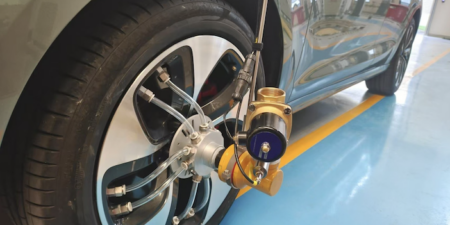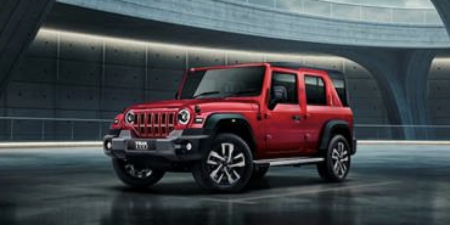The Rimac Nevera has set a top speed of 412kph (258mph), making it the fastest electric production car in the world. The top speed is the same that Rimac targeted when the car was first unveiled as the C_Two at the Geneva Motor Show in 2018 but now, after a collective 1.6 million hours of development, it has been verified. The record-breaking run follows on from the Nevera’s independently verified 8.582-second quarter-mile run in 2021, which made it the world’s fastest accelerating production car.
The speed record was achieved at the Automotive Testing Papenburg facility in Germany – one of the few oval tracks with straights long enough to achieve such speeds, with two 4km straights.
Prior to the record-setting run, the Nevera was set into its top speed mode, creating an aerodynamic profile that balances drag and downforce to ensure stability at high speed. The car was fitted with road-legal Michelin Cup 2R tyres, and with a Michelin technician on-hand to check their condition.
Behind the wheel was Miro Zrnčević, Rimac’s chief test and development driver. It was his challenge to get the perfect entry onto the straight from the track’s curved sections to give the car the best possible chance of reaching V-MAX. As the car levelled out of the banking, travelling around 250kph (155mph), Miro unleashed the full 1,914hp power of the four-motor Rimac-developed powertrain and battery pack, which can propel the hypercar from 0-60 mph in just 1.85 seconds, and to 100mph in 4.3 seconds – and which catapulted the Nevera well into the 400kph range.
It wasn’t until Miro had lifted off the throttle that the news came over the radio. 412kph (258mph) had been reached – exactly as simulated many years ago. The speed was fast enough to make Nevera the World Record holder for fastest EV production car and also the fastest car ever recorded at Automotive Testing Papenburg. The top speed was measured using Racelogic V-Box GPS-based measurement device.
Miro Zrnčević said of the lap, “To travel at 412kph, or 258mph, means travelling at a third of the speed of sound. Simply achieving that alone in a road car is incredibly complex, but in the Nevera we have created a car that can travel long distances on a single charge, can tackle tight and twisting race tracks, and can drift as well as break straight-line speed records, both for acceleration and V-MAX. I’ve driven Nevera since it first turned a wheel and to see the perfectly honed car that is today is a really emotional moment. The most important thing I have learned during the top-speed attempt is how composed and stable the car was – confirming that our aerodynamics and vehicle dynamics teams have done an amazing job.”




